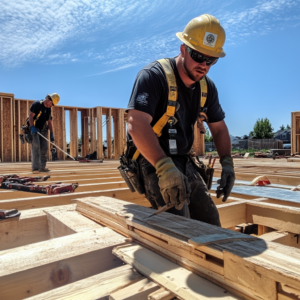Neuroscientists tell us that, strictly speaking, the popular conception of “left brain” versus “right brain” is off base. I’m sure that’s true, but the notion may still have some utility.
Medical News Today sums up that popular conception this way:
Left-brained people are said to be more:
- analytical
- logical
- detail- and fact-oriented
- numerical
- likely to think in words
Right-brained people are said to be more:
- creative
- free-thinking
- able to see the big picture
- intuitive
- likely to visualize more than think in words
Truth be told, fMRI research shows that people use both hemispheres of the brain based on the task at hand; science doesn’t support the idea that one hemisphere is “dominant” over the other.
The Task at Hand
But what kind of tasks occupy the majority of your time? My sense is that construction financial managers, c-suite executives and IT specialists spend most of their time doing left-brained tasks, while field personnel need to be able to visualize and manipulate actual objects in space—they’re continually “Drawing on the Right Side of the Brain.”
Like professional pool players, field personnel need to be able to silence their mental chatter, focus on what they’re doing and make things happen in the real world.
Specialists across construction tech and especially in my area—construction data analytics—need to be able to communicate skillfully with both of these groups.
But in working closely with contractors over the years, I have become increasingly aware that left-brained jargon—”cognitive process automation,” “natural language analytics,” “data lake collections” and so forth—can be off-putting for some.
The same can be true of certain approaches to visual presentation: While a CFO who has logged 10,000 hours in spreadsheets may delight in seeing a dense grid packed with rows and columns of performance data, this same report could be overwhelming for a busy superintendent trying to run a noisy, action-packed construction site.
One construction CEO put it this way, in speaking of labor reporting for field personnel: “Unless you break it down into what they’re used to and translate it into their language, I’m not sure it does much.”
I totally agree. Field personnel tend to think in terms of “hours” and “crew days,” not complex financial projections involving “allocated labor resources.”
Crafting the Message
Like it or not, if you’re in construction tech, you’re a communicator. And to communicate effectively, you have to continually put yourself in the shoes of your intended audience. In my view, many construction professionals are pragmatic, no-nonsense people, even at the c-suite level. Indeed, it’s not unusual for CEOs of contracting firms to have started their careers “swinging a hammer” as part of a family business.
Construction continues to lag other industries in tech adoption. Sometimes I wonder if the excessive use of jargon by startups could be partly to blame. Have you ever read a construction tech press release or advertisement and thought, “Yeah, but what does this company actually do?”
So how can you make sure that people grasp your message?
One approach is to be circumspect about jargon. As a data scientist, I love the term “predictive analytics,” but I have realized that not everyone understands this. These days, instead of just using that term in isolation, I may say something like this:
“If you think about it, when you’re coming up with an estimate, you go back and you look carefully at your costs and conditions on similar projects in the past. Our system automatically pulls in that kind of information—it can be anything you want, including things like the time of year and the likeliest weather patterns—and then gives you some predictions as a starting point. The more data you collect, the more you can put into the model.”
That may be a bit long-winded, but it conveys that predictive analytics isn’t mysterious. It’s just a smart way for contractors to verify their own gut feelings and guesstimates.
Likewise, visual reports should be crafted to meet the needs of their intended audiences. Ideally, the platform you use will allow you to “drag and drop” different elements to customize the information as needed: The CFO may want a complex report. However, even within the c-suite, different people like to consume information in different ways. Some execs are fond of simpler, more aesthetically pleasing data visualizations that allow them to get right to the crux of the matter, whether it’s AP, AR or over- and under-billings, to make a quick decision.
PMs may only need to see a few Key Performance Indicators (jargon alert!), along with one or two graphs and charts. Oftentimes, they also need the report to fit right in the window of their smartphone or tablet.
I’m a huge fan of construction tech and am an evangelist for data analytics. I’m thrilled by the ongoing revolution in the industry and the way more people are grasping the importance of BIM, digital twins, BI solutions and the like.
However, I still believe that contractors could be adopting technology much faster.
Mark Twain once said, “If you can catch an adjective, kill it.” By taking a similar stance on jargon—and I concede that this isn’t always easy; there’s even some jargon in this column—we stand a better chance of getting our point across.
That means making a real difference in the industry, from designing and constructing better buildings, to ramping up safety and growing the bottom line.
Photo by Prateek Katyal on Unsplash




Responses